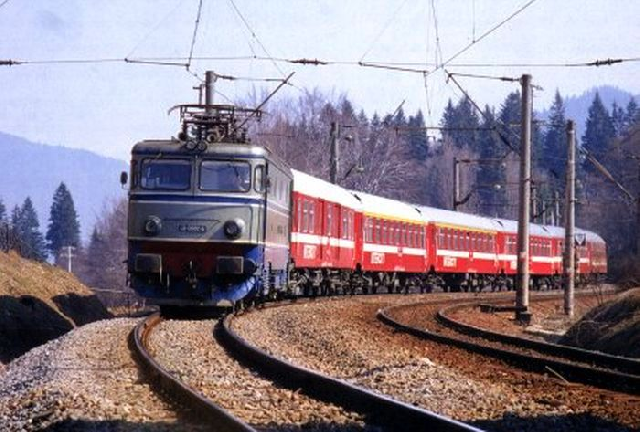The train stations of Bucharest
Bucharest had several stations, important landmarks in Bucharests daily life.

Steliu Lambru, 10.12.2016, 14:13
The railway was the first modern means for transporting passengers and goods on wheeled vehicles running on rails that eased freight transport, facilitated mobility of people and labor and centralized states. The railway had an essential role in the formation of the modern Romanian state as it gave cohesion to the union of Moldavia with Wallachia in 1859 and to Greater Romania after 1918. Bucharest thus became an important railway hub.
Bucharest had several stations, important landmarks in Bucharest’s daily life. Along the years, the railways technology developed and was modernized. The train stations of Bucharest are located in all 4 cardinal points, each station providing rail transportation to Romania’s regions in the 4 cardinal points.
The history of the Bucharest stations starts in 1869 with the Filaret Station that was opened at the inauguration of the first railway linking Bucharest to Giurgiu. The building of the station is U-shaped and has one story. Three trains could pull up on the stations’ three terminals. In 1960 Filaret Station was closed down and turned into a bus and coach station, which is still operational today. The building was declared a historical monument.
On the route between Filaret Station and the future North Station there was the Dealul Spirii Station, which no longer exists today. The location can be found at the intersection of two big boulevards of Bucharest, Calea 13 Septembrie and Progresului Street, in the west of the city. Another station that is no longer operational today is the Cotroceni Station. It used to be located near Cotroceni Palace, now the headquarters of the Romanian Presidential Administration. The station was used by the royal trains. It was shut down in 1960 just like Filaret Station, the station’s building now serving as an entry gate to the Cotroceni Park. A second station with the same name operated at a distance of 1.5 km from the first, in the west of the city. It is still functional today but traffic is limited to two freight trains per month, supplying the two malls in the area. Herăstrău Station is another station that no longer exists today. It was located near the biggest park of Bucharest, Herăstrău. The respective railway used to link the north to the south of the capital.
In 1872, Romania’s ruler Carol I inaugurated Gara de Nord (the North Station), the most important railway junction, with an overall number of 14 railways built along the years. In time, larger buildings and outbuildings were constructed there. The initial name was Gara Targovistei, after the name of the town situated northwest of Bucharest, the current name of the station dating back to 1888. It was a U-shaped building, just like the Filaret train station. The largest flow of travellers was registered between 1950 and 1990, but a significant decrease has been reported ever since. The Gara de Nord compound has been declared a national monument.
One of the most beautiful stations in Bucharest is Gara Obor, or the East Station. It serves the eastern side of the capital city and links Bucharest to the Black Sea port of Constanta. It is used by both travellers and freight carriers. The station is placed within walking distance from one of the oldest and biggest markets in Bucharest, Piata Obor. Its building has also been declared a national heritage building.
One of the most discreet stations in Bucharest is Gara Baneasa, situated in the northern part of the capital city, close to one of Romania’s main national roads. Built in 1936 based on the blueprints of the famous architect Duiliu Marcu, the station was destined for protocol activities by the Royal House. It also enjoyed the same status of protocol station during the communist regime. Traffic is rather low, as mainly trains linking the capital city to the seaside stop here, particularly in summer.
More recently built stations in Bucharest are Gara Basarab, Gara Progresu and Gara Titan, which have been constructed after 1945. Gara Basarab is located close to Gara de Nord, the main train station, and it was built in 1959. It is used mainly by trains heading for southwest. Built in 1960, Bucuresti-Progresu had 4 lines and was operational until 2006. It was used by trains going to southern Romania, and further away, to the Balkans, Bulgaria, Greece and Turkey. Today, it is used only by freight trains. Titan Sud is a small train station situated in the southeastern part of the capital, at the end of the subway line to the Republica plant. During the communist regime, it was called “August 23”. Passenger trains leaving from Titan Sud are headed to the town of Oltenita.





























